How dangerous is the 'celebration' that shoots into the sky at celebrations?

In countries and regions where gun ownership is common, ``cannon
The Reality of Celebratory Gunfire
https://www.1point21interactive.com/celebratory-gunfire/
In Central Asia and America, there is a custom of firing salutes into the sky for events such as weddings, New Year celebrations, and Independence Day. However, stray bullets in salutes often still have the power to kill and injure humans . Accidents such as attendees dying during the salute have also occurred frequently.
According to the non-profit organization Gun Violence Archive , 95% of shooting accidents in the United States occur on January 1 (New Year), July 4 (American Independence Day), and December 31 (New Year's Eve). About. Not all accidents are gun salutes, but we do see a trend toward more gun accidents on festive days.

It goes without saying that the bullets shot into the air in the salute will eventually fall to the ground, but their speed and power depend on various factors such as gravity, the type of bullet, air resistance, and launch angle. So 1 Point 21 Interactive worked with ballistics experts to calculate the velocity and power of the fall for multiple bullets and angles.
First, let's consider the case where a bullet called ' .22 long rifle bullet ' used for hunting and sports shooting is shot at an angle of 88 degrees near vertical. Bullets are fired at a speed of 1280 feet (about 390 m) per second, and after only 0.5 seconds reach an altitude of 456 feet (about 139 m), which is almost the same as the Great Pyramid of Giza .

The speed of the bullet gradually decreases due to gravity and air resistance, and after 2 seconds it has decreased to 360 feet per second (about 110 m). The altitude at this point is 1450 feet (about 442 m), which is comparable to the
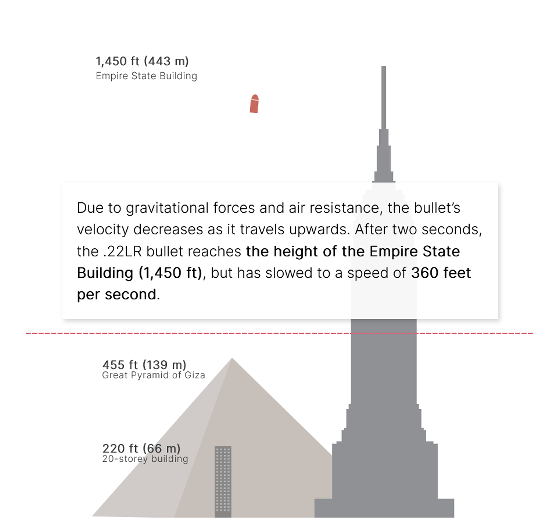
After 9 seconds it reached the highest point of 2362 feet (about 720 m). It's no match for the 820m
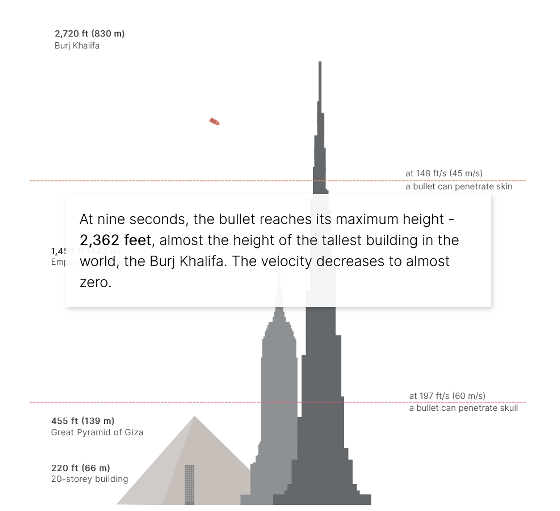
The speed of the bullet that fell to a height of 1885 feet (about 575 m) is 148 feet per second (about 45 m). This is the speed at which it is possible to penetrate human skin, and there is even a danger of death depending on the location.
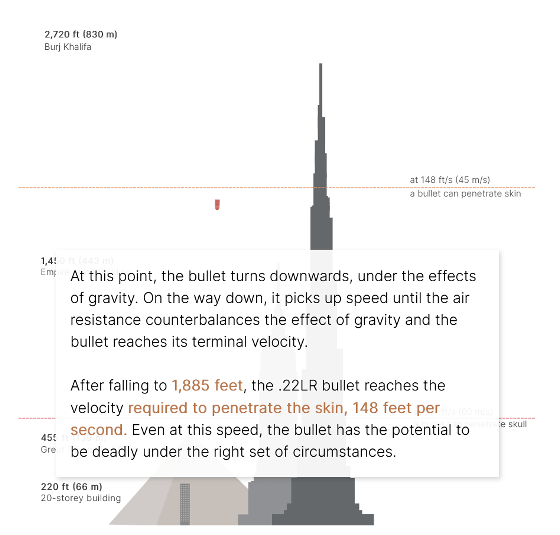
A bullet falling as it is reaches 200 feet per second (about 61 m) at a height of 600 feet (about 182 m). This is fast enough to penetrate the human skull, and if it hits the head, there will be no one.

The bullet reaches the ground after 24 seconds, but the impact point is 173 feet (about 53 m) away from the launch point. This is a distance equivalent to half a football field, and you can see that it can fly quite far even at an almost vertical angle.

If the .22 long rifle bullet is launched at an angle of 45 degrees, it will land 2805 feet (about 855 m) away from the launch point. In this case, it is not powerful enough to penetrate the skull, but it seems that there is still enough power to penetrate the skin.
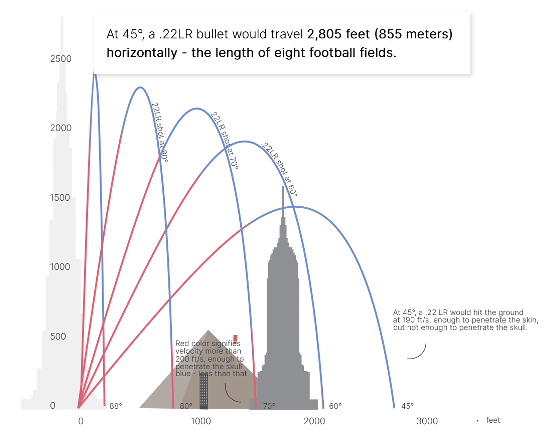
This is a diagram of the superimposed trajectories of
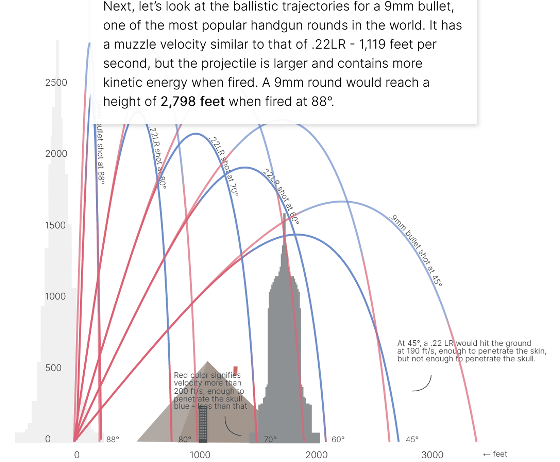
In addition, this is a diagram in which simulations are performed with various bullets and angles and the trajectory is superimposed. In particular, the

1 Point 21 Interactive said in a salute, 'According to our simulations, all bullets fired from any angle are potentially lethal and return fast enough to destroy skin.' claims that it is clear that the danger is irrespective of the type or angle of the bullet. He said that gun salutes should be avoided in rural as well as urban areas, and that people need to understand the risks.
Related Posts:
in Science, Posted by log1h_ik







